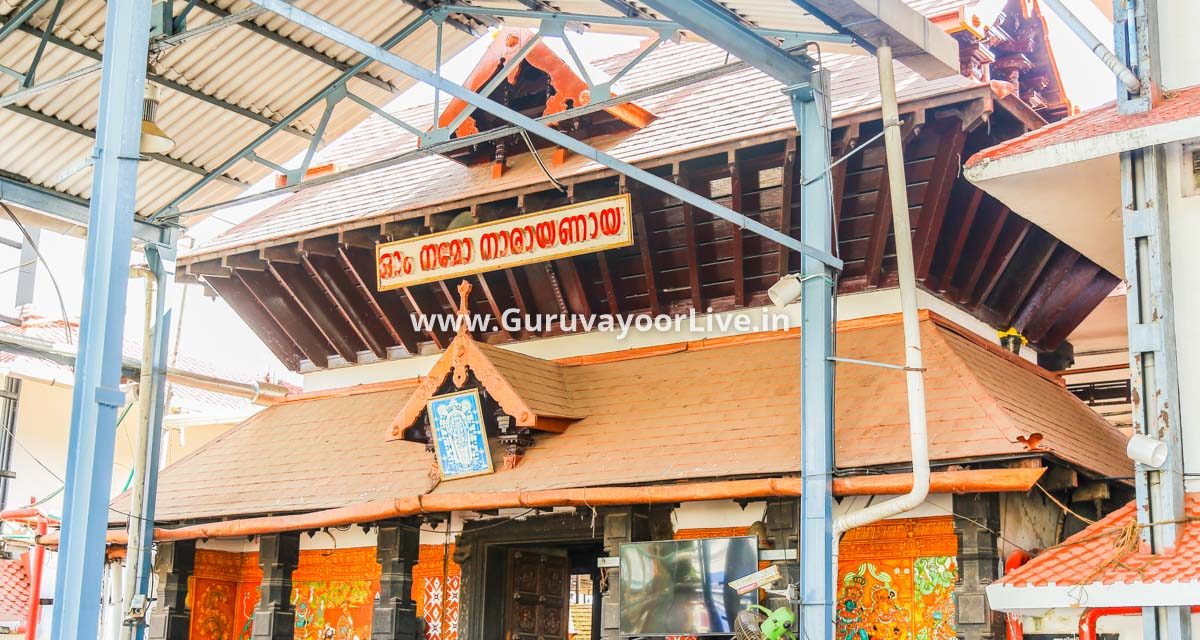

Attractions Of Guruvayur
Temples
Chamundeswari Temple Located in proximity to the Guruvayur Temple, Chamundeswari Temple is dedicated to Sri Chamundeswari Devi, a highly revered form of goddess Durga. There is a separate shrine within the premises of this temple and is dedicated to Thazhthukavu Bhagavathy. The temple dates back to ancient centuries and witnesses regular flow of devotees throughout the year. Guruvayurappan Temple One of the most visited temples in South India; Guruvayurappan Temple is dedicated to Lord Krishna, also known as Bal Gopalan. Every day, the temple witnesses a huge crowd of devotees for the daily Darshan. The mural paintings on the walls of this temple are quite beautiful and represent Krishnaleelakal, childhood of Krishna. The temple is one of the most popular places for wedding and at times more than 300 weddings take place in the temple. Harikanyaka Temple Located at Ariyanoor, a neighboring village of Guruvayur, Harikanyaka Temple is believed that this ancient temple was built by Perumthachan. This temple is maintained by Archaeological Survey of India. Lord Harikanyaka, a virgin form of Lord Vishnu, is the primary deity of this temple. Every year, during the months of March & April, a 15 day festival is celebrated in the temple. Nava Mukunda Temple Dedicated to Lord Nava Mukunda, a form of Vishnu, Nava Mukunda Temple is located on the banks of River Bharathapuzha at Thirunavaya. Legend has it that the idol installed in the temple is the 9th idol installed by Navayogis. It is said that the day idol would descend into the Earth; Kaliyuga will come to an end. Venkitachalapathy Temple Located close to the Parthasarathy Temple in Guruvayur, Venkitachalapathy Temple is dedicated to Lord Venkitachalapathy, a form of Lord Vishnu. Devotees believe that visiting this temple and praying to Lord Vishnu will bring happiness and wealth in their lives. The temple attracts devotees in large numbers.The Major Attractions
Udayasthamana Pooja: This is the most popular offering, the booking for which are said to have been done for the next ten years. Udayasthamaya literally means from sunrise to sunset. Hence it implies worship from sunrise to sunset. It consists of 15 special Poojas in addition to all the routine poojas and begins after the morning Siveli. There is a special feast for the devotees. There is the Vilakku (illumination) in the evening. The Siveli in the evening takes 5 rounds instead of the usual 3. The tripuka marks the end of the udayastamana pooja. Prasadaootu: These are arrangements for free feeding as Prasadams at the dining hall for thousands of pilgrims at 10.00 AM everyday. One can make an offering of any amount (min Rs 1) for this free feeding. Elephants: Devotees offer elephants to Guruvayoorappan and today there are about 40 elephants kept with Punnathur Kotta maintained by the Devaswam. The feeding of these elephants- Anayoottu is another popular offering that attracts many on-lookers. All the elephants are taken to the temple at around 10 A.M, and fed a sumptuous feast of fruits, molasses and boiled rice. Tulabharam: A devotee is weighed against a commodity of his choice-banana, sugar, water, gold, in fact anything permitted inside the temple. If you want to be weighed against articles not permitted inside, do not worry. Arrangements are made for conducting the tulabharam outside the temple. Also, non-Hindus can perform the ritual outside. Annaprasanam: This is the first rice-giving ceremony of a child conducted before the Lord Guruvayoorappa . All the itemsincluding cooked rice, payasam (sweet preparation of rice and jaggery; rice, sugar & milk) plantain etc. are placed on a banana leaf and the children are fed each of these. Alroopams: You can offer miniature images in gold or silver, or replicas of different parts of the human body, eyes, nose, limbs etc. It is believed to cure whichever part is affected and therefore offered. You can place it after depositing in the hundi, an amount devised by you. Picking up Kunnikkuru: You can offer this to develop your children’s intelligence and smartness. A handful of these seeds (Abrus precatorious) are picked up and dropped thrice in the vessel kept for the purpose and an amount desired by the devotee is deposited in the hundi. Bhagavati Azhal: 10 or 20 wicks soaked in oil are kept in a sheath of plantain tree and lighted before the goddess Bhagavati. It is done after deeparadhana and athazha pooja. Sayanapradakshina: Also called angapradakshina, the devotee circumambulates the temple, rolling along the pradakshina path with his eyes closed and chanting the Lord’s name. Bhajan: This offering is the most fruitful and spiritually elevating- it is the complete dedication of oneself to God. It is austere worship, the devotees forgetting their worldly worries and associating them maximum with whatever goes on within the temple-heavy bath in the temple pond, drinking water from its well and having the Prasadam as food. Married people are expected to observe strict brahmacharya (celibacy) during the bhajan. Apart from these main offerings, there are a variety of archanas, alankarams, and naivedyams that can be offered. A list of all these offerings and their rates is displayed at the counters on the northern side of the temple. Bhagavati Azhal: 10 or 20 wicks soaked in oil are kept in a sheath of plantain tree and lighted before the goddess Bhagavati. It is done after deeparadhana and athazha Pooja. Krishnanattam: Krishnanaattam, which is the most important art form of the temple, is performed in the temple as an offering. Devotees can offer this as a vazhipadu or offering on a payment of the prescribed amount. Each days performance believably yields a particular benefit to those making the offering.








